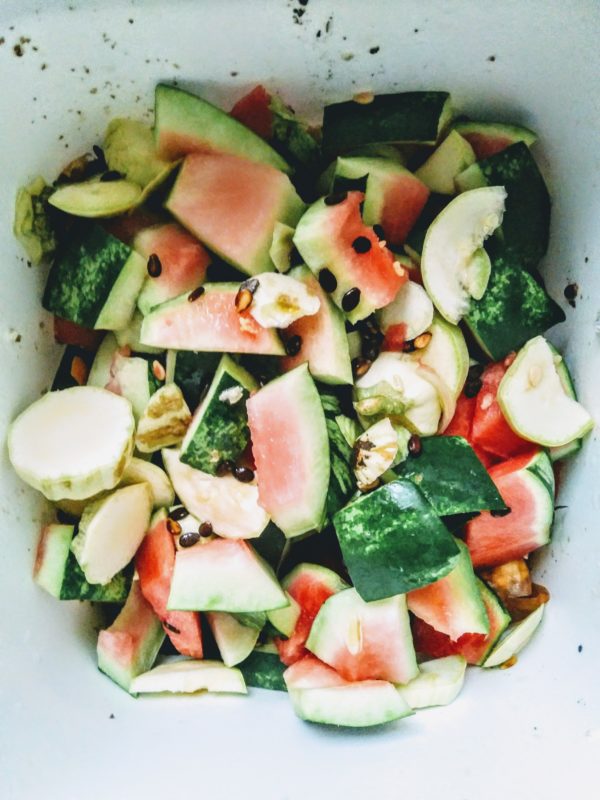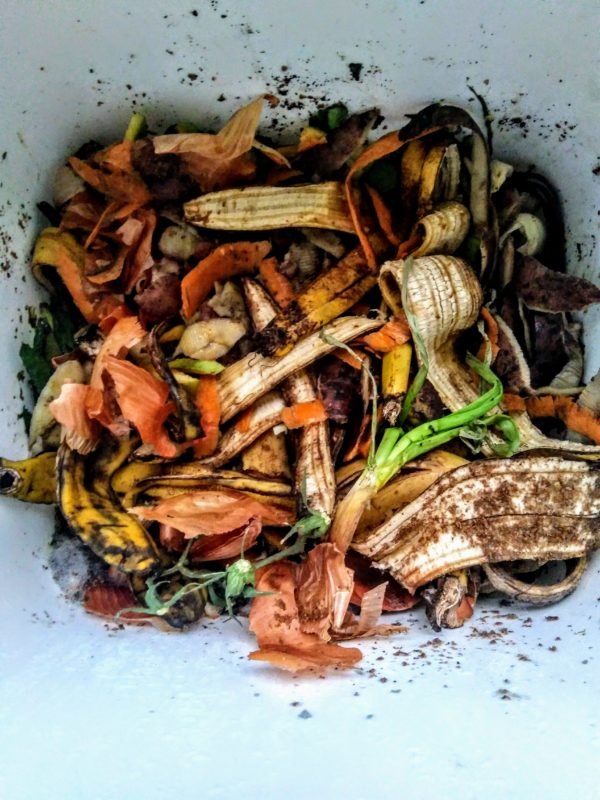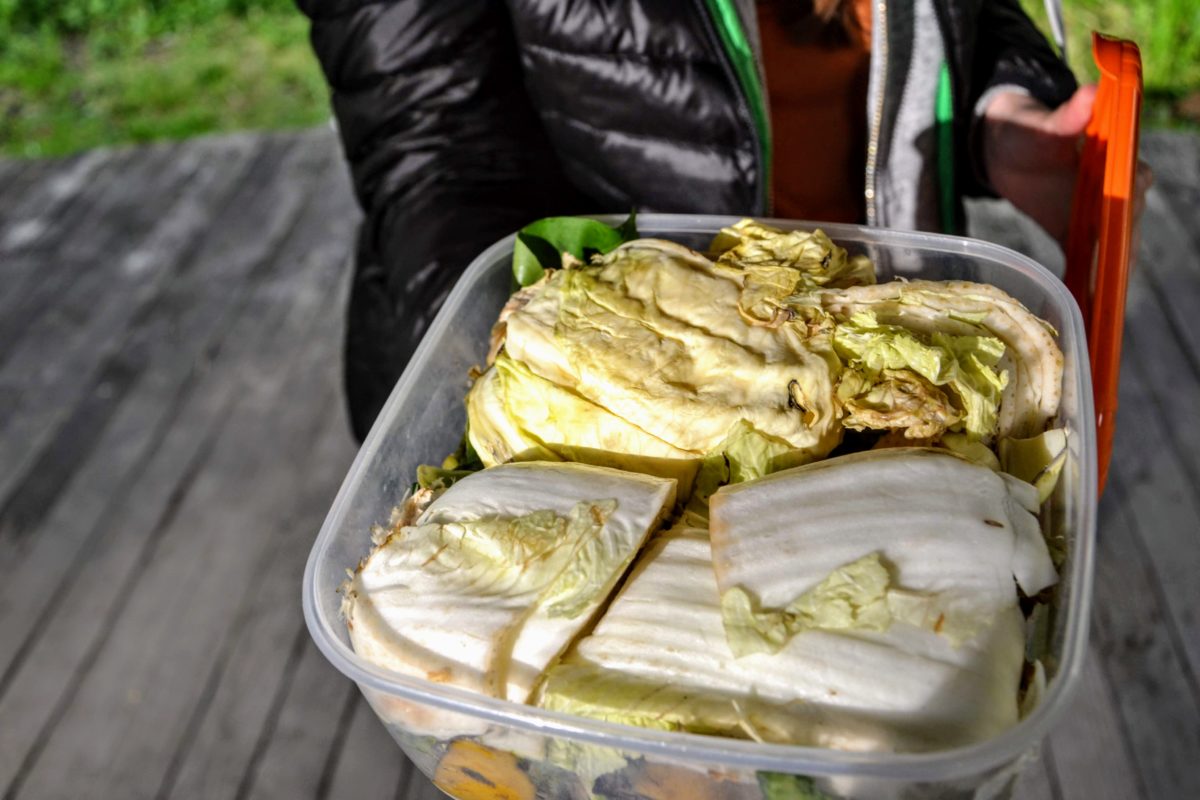ORGANIC WASTE COLLECTION IN THE APARTMENT
Collection of organic waste in diverse containers
How to collect:
Put all kitchen and household waste (see the list in the previous section) into a separate container. Choose a bucket or can (or whatever you think of) that is more comfortable for you. The volume should depend on how many people live in the apartment, how often you cook at home, and, accordingly, how much organic waste is generated and how much space in the kitchen you can allocate. Be aware that it is better not to keep the bucket very close to a heat source (batteries, cooker) as this speeds up the process of decaying of the organic matter. Also, pay attention to the convenience of transportation. A container with a handle is easier to convey to a common composter. When the tank is full, simply transfer its contents to the composter.
Advantages of this method are:
You can use any bucket (or whatever) that is already at home, and nothing else needs to be bought or searched for.
Disadvantages of this method:
- If you cook often, organic waste can fill the bucket very quickly and needs to be taken out more often.
- Also, the waste is not fermented, which can cause some smell, especially in the warmer months.
- If you forget about the organics for a longer period (went out of town for a few days, or for a vacation), you can get the so-called fruit (drosophila) flies, and the organics can be covered with mold.
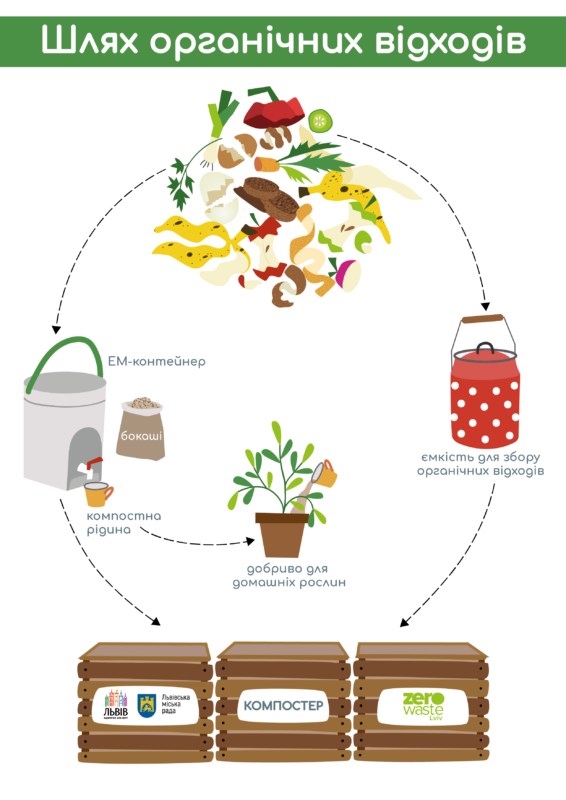
Collection of organic waste with a bokashi container.
How to collect
The bokashi container is a special double bottom bucket, one of which has many small openings inside.
A Special reservoir that holds compost fluid (also known as compost tea) is located at the bottom of the bucket. It is filled by the liquid that drains through the openings in the bottom of the top reservoir. Finally, there is a tap that helps to drain the liquid. Bokashi containers are available in different sizes and sizes (15 to 20 liters), but you can also make one yourself at home.
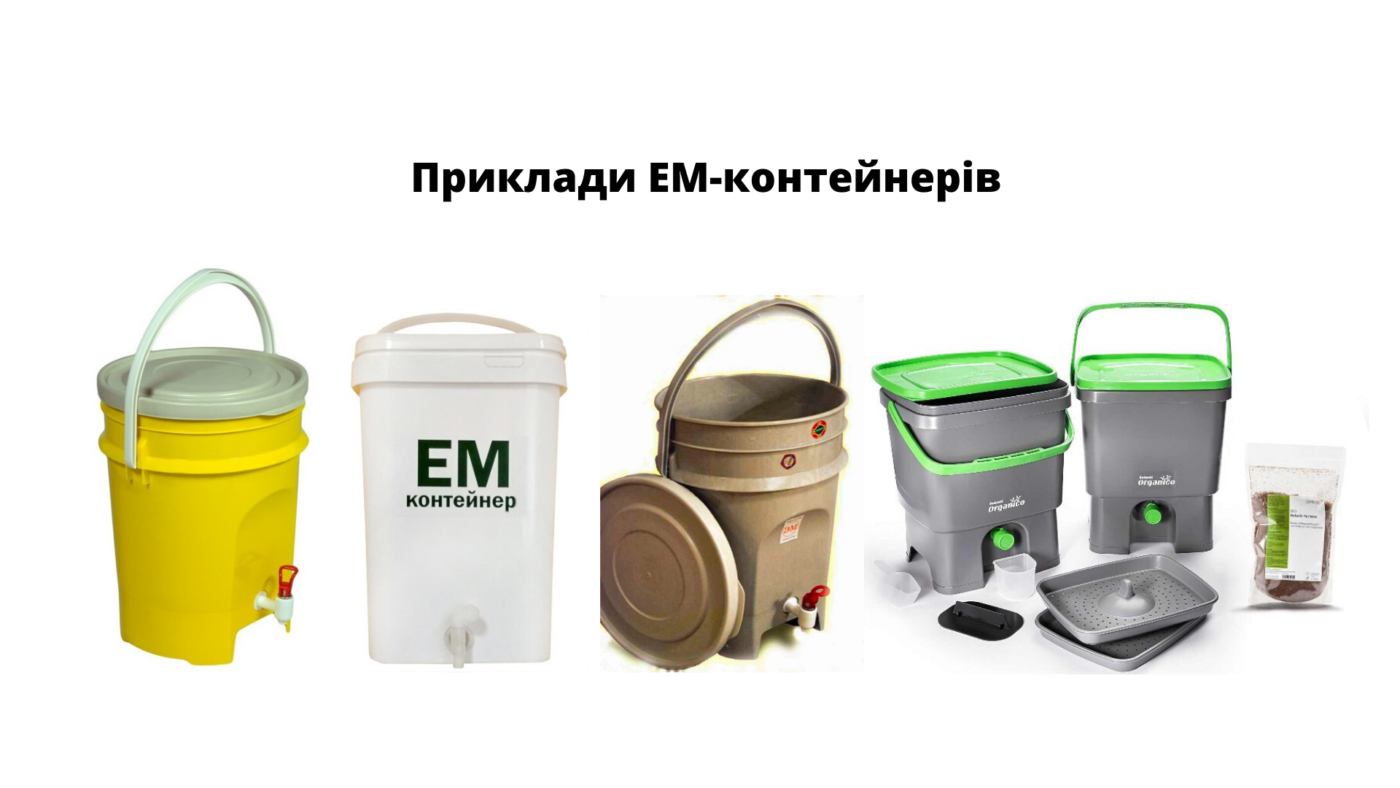
Bokashi are used to accelerate the decomposition of organic waste. Bokashi are special bran enriched with microorganisms that help your organic waste not to rot, but ferment and loose in volume through the separation of the above-mentioned compost tea. There are 2 ways to collect organics with this method:
- Collect it in a smaller container (a simple plastic tray or a jar with a lid – you definitely have one at home), pour in bokashi ( just take a small handful and put it on top of the collected organic waste, no need to mix), then close the lid and wait 1-2 days for the organic matter to ferment and pour it into the bokashi container. It is best suited for those who do not cook often or when you have a small family, as such a tray fills up within 2-3 days. This eliminates the need to open the bokashi container several times a day.
- You can immediately pour the organic matter into the bokashi container and put some bokashi on top of it (the amount is as described above). Be careful not to open it more than 1-2 times a day (reduces the risk of the appearance of fruit flies).
You have to drain the liquid as needed. It does not form immediately – it should appear in at least one week during the warm season (when we eat lots of vegetables, fruits, especially watermelons) and 2 weeks when its colder (potato and carrot peels, onion husks). If it does not form any liquid, then the organic waste is too dry. We recommend that you moisturize it a couple of times a week – for example, you can water it (about 100 ml). But you should not overdo it.
Compost tea is very useful and can be used at home: diluting 1:10 with water to pour flowers, or as a pipe cleaner. It can also be used when you run out of bokashi – water the organics in the bucket with a small amount of compost tea (which already contains the required trace of microelements) and it will ferment as usual.
From time to time it is also necessary to tamp down the organic matter, so depending on its quantity, it is necessary to press it from time to time (every 3-4 days). The old potato pounder is perfect for this.
The bokashi container should not be kept in the cold season, especially when frosts are coming, in unheated rooms, or on an open-air balcony. Since the bucket is not additionally warmed, there is a high risk that it will freeze, so the fermentation process will not occur properly and it will be difficult for you to scrape away the frozen organic matter from its walls. Room temperature is sufficient for this process. When choosing a bucket, be sure to keep the top cover tight – it should fit tight – and pay special attention to the tap design – choose one that doesn’t leak from the beginning. If all requirements are met, there should be no leakage or an unpleasant smell from the bokashi container.
When the bokashi container is full, take its contents to the “working” composter (the composter with the sign “Compost here”)
The advantages of this method:
- It is not necessary to go often to the outdoor composter.
- A 20-liter bucket fits 50-60 liters of organic waste.
- You will get compost tea
The disadvantages of this method:
- You need to buy a special bucket and bokashi
- It is necessary to pour out the compost tea on time so that it does not stagnate and turn sour.
- There is a danger of purchasing a poor quality bucket where the lid will not be tight and the tap will leak.
If there is no outdoor composter nearby, then the waste can be dug in the nearest forest or park. It is important not to dig them very deep into the ground.
Important!
It is not necessary to collect organic waste in a plastic bag. However, if you still secure the bucket in this way (which we do not recommend), do not dispose of the collected food waste with the plastic bag in the composter (even if the package says “bio” or “compostable”). In this case, the contents of the package should be poured into the composter and the package itself should be disposed of in the general waste bin (mixed waste).
More tips on what can and can’t be composted can be found in the section “About Composting”. Also, information on how to collect and what can and cannot be composted you can find in a booklet that you can download, print and hang on the fridge or near the organic waste container to keep it in front of your eyes.
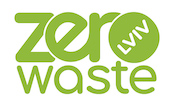

 UA
UA